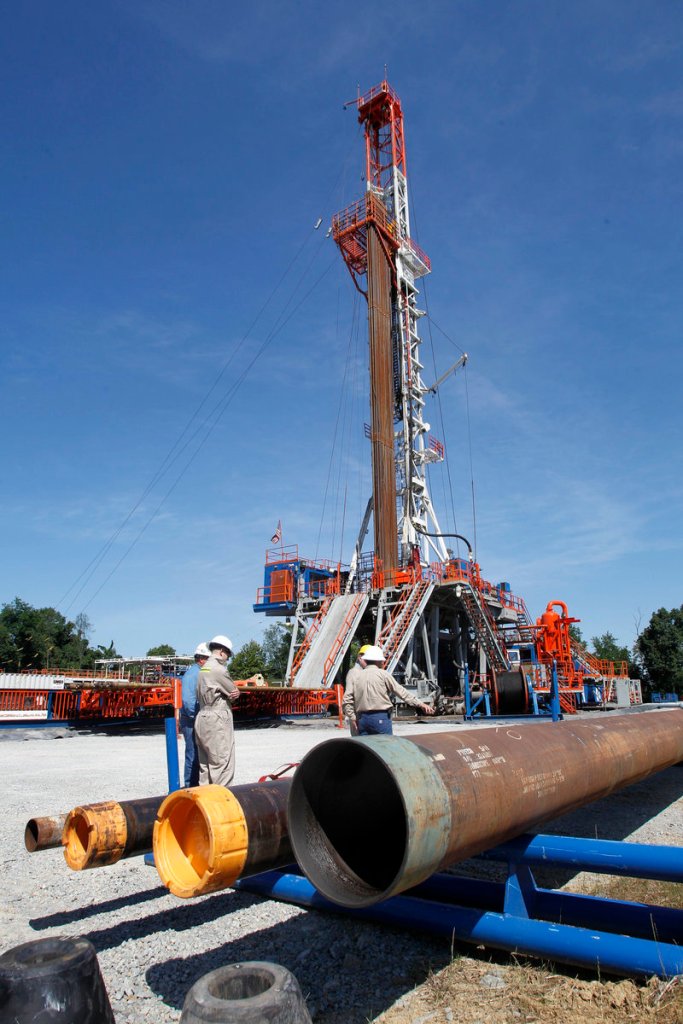WASHINGTON — The rush to capture natural gas from hydraulic fracturing has led to giant compressor stations alongside backyard swing sets, drilling rigs in sight of front porches, and huge flares at gas wells alongside country roads.
Air pollution from fracking includes the fumes breathed in by people nearby, as well as smog spread over a wide region and emissions of methane, a greenhouse gas.
Today, the Environmental Protection Agency is expected to announce the first national rules to reduce air pollution at hydraulically fractured — fracked — wells and some other oil and gas industry operations. The agency estimated that the plan it proposed in July would reduce smog-forming, cancer-causing and climate-altering pollutants from the natural gas industry by about one-fourth.
In recent weeks, the White House has been reviewing the EPA plan to consider possible changes, the normal procedure for regulations. Industry groups have lobbied for exemptions that would reduce the impact of the rule, saying the original requirements are too costly. Environmental and health advocates have been talking to White House officials as well, opposing the industry’s proposed changes.
The final version today will show how President Obama’s administration navigates between the nation’s needs for energy and health. Obama supports fracking because it yields vast amounts of natural gas, a fuel that burns cleaner than coal. He also has said that it should be done “without putting the health and safety of our citizens at risk.”
Pam Judy of Carmichaels, Pa., says she fears that her family already is at risk from fumes from a large natural gas compressor station 780 feet from their home in the hills. When they built it, they were far from everything. Three years later, a natural gas compressor station was built on neighboring property.
“We have fumes that are in our yard almost constantly,” she said. “There are times when it smells like diesel or a kerosene smell. It’s very difficult to pinpoint the exact smell. Then there are times we get a smell like chlorine. When we get that chlorine smell it literally will scorch your eyes and your throat.”
Air tests found 16 chemicals in her yard, including benzene, a chemical that the EPA classifies as a carcinogen. She said test of her blood also showed exposure to benzene and other chemicals. Fracking involves pumping water, sand and chemicals deep underground to release gas. After the injection, the fracking fluids and gas flow back for a period of several days or more.
The EPA’s rule would require companies to use portable equipment to capture this gas that otherwise escapes to the atmosphere or gets burned off in flares, a process known as green completion. The equipment would reduce volatile organic compounds, which are part of what forms smog. The same equipment would capture methane, the primary constituent of natural gas, and make it available for sale.
The industry estimates that more than 25,000 wells are fractured or refractured each year.
Copy the Story Link
Send questions/comments to the editors.



Success. Please wait for the page to reload. If the page does not reload within 5 seconds, please refresh the page.
Enter your email and password to access comments.
Hi, to comment on stories you must . This profile is in addition to your subscription and website login.
Already have a commenting profile? .
Invalid username/password.
Please check your email to confirm and complete your registration.
Only subscribers are eligible to post comments. Please subscribe or login first for digital access. Here’s why.
Use the form below to reset your password. When you've submitted your account email, we will send an email with a reset code.